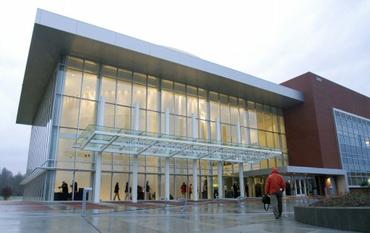The U.S. Green Building Council (USGBC) announced that it is postponing plans to ballot the next version of LEED until as late as June 2013. With this announcement, USGBC promises to keep LEED 2009 available for a full three years from now, although it intends to gradually ramp up incentives for teams to move to the new version of LEED during that time.
According to Environmental Building News, the move came in response to a growing outcry from architects and other building industry professionals—including many who have been core supporters of LEED since its inception—who had three related concerns:
• The proposed changes in the rating system were too much, too fast, especially in a weak real estate market.
• Some of the changes needed more refinement , especially in the Materials & Resources category, where whole new approaches to material selection had been introduced and had changed significantly with each public comment draft.
• Tools and resources needed to achieve the credits would not be widely available by the time the new system was slated to launch in November 2012.
Compounding these concerns were doubts about the ability of USGBC’s sister organization, the Green Building Certification Institute (GBCI) to develop an effective certification process in such a short timeframe—fears that linger after the release of LEED 2009, which was marked by an ill-fated attempt to outsource the certification process to third-party certification bodies and glitches that marred the usability of LEED Online. LEED users conveyed their concerns directly to USGBC staff and board members, expressed them in formal comments on the various drafts, and debated them on the LEEDuser forums.
No longer tied to a particular year, USGBC is also reverting to a version naming system for the rating system, so the new version will be called “LEED v4” instead of “LEED 2012.”
Even as it frustrated the many volunteers on the LEED committees who have labored for years on many credits in the proposed draft and are anxious to see them introduced to the market, the new announcement was celebrated by many practitioners in the industry.
”It is gratifying to see that an organization that is nearly twenty years old with 15,000 member organizations still can as be nimble and responsive as the start-up we remember,” noted Russell Perry, FAIA, vice president and office director at SmithGroupJJR. “The Council heard many of its members when we said that we were going to need some time to test out the new ideas and make sure they worked in our markets.”
The committees have been anticipating these changes for a long time, after the decision with LEED 2009 to minimize technical changes and focus on the reorganization and weighting of the credit structure. As a result, the credit requirement changes in the proposed LEED v4 rating system are the most extensive in LEED’s twelve-year history.
The new announcement comes just a few weeks after USGBC had tried, with limited success, to allay these concerns by postponing the planned ballot from May 2012 to August and by promising to keep LEED 2009 available to project teams for at least six months after the introduction of LEED v4. At that time, USGBC had also announced plans for a “beta test” of the new rating system, but critics had questioned how such a test would be useful if the changes it purported to test were already locked in by member ballot.
The new plan gives time for that beta test to proceed while allowing for its results to inform a fifth public comment draft, which is scheduled to run from October 2 to December 10, 2012. That timeframe encompasses the annual Greenbuild Conference and Expo, allowing for in-person interaction among USGBC members and other stakeholders about the proposed changes.
USGBC asserts that language in LEED supporting the highest standards of forest certification and pushing for transparency and avoidance of chemicals of concern will not be watered down during this extended process, despite unprecedented attacks from the chemical industry, which recently joined the mainstream forest products industry in seeking to undermine LEED by pushing Congress to prohibit the federal government from using it. Read More.

